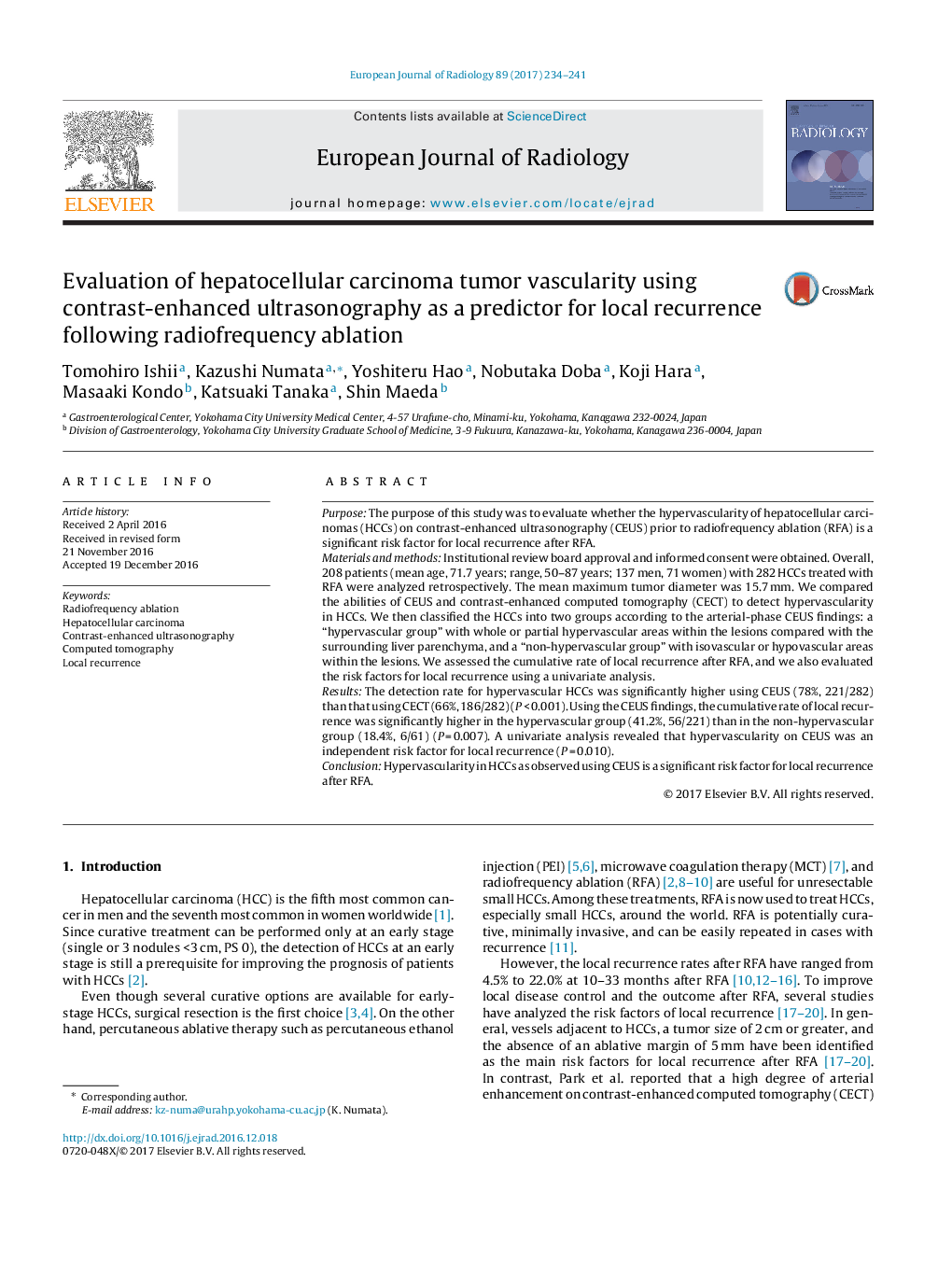| Article ID | Journal | Published Year | Pages | File Type |
|---|---|---|---|---|
| 5726365 | European Journal of Radiology | 2017 | 8 Pages |
PurposeThe purpose of this study was to evaluate whether the hypervascularity of hepatocellular carcinomas (HCCs) on contrast-enhanced ultrasonography (CEUS) prior to radiofrequency ablation (RFA) is a significant risk factor for local recurrence after RFA.Materials and methodsInstitutional review board approval and informed consent were obtained. Overall, 208 patients (mean age, 71.7 years; range, 50-87 years; 137 men, 71 women) with 282 HCCs treated with RFA were analyzed retrospectively. The mean maximum tumor diameter was 15.7Â mm. We compared the abilities of CEUS and contrast-enhanced computed tomography (CECT) to detect hypervascularity in HCCs. We then classified the HCCs into two groups according to the arterial-phase CEUS findings: a “hypervascular group” with whole or partial hypervascular areas within the lesions compared with the surrounding liver parenchyma, and a “non-hypervascular group” with isovascular or hypovascular areas within the lesions. We assessed the cumulative rate of local recurrence after RFA, and we also evaluated the risk factors for local recurrence using a univariate analysis.ResultsThe detection rate for hypervascular HCCs was significantly higher using CEUS (78%, 221/282) than that using CECT (66%, 186/282) (PÂ <Â 0.001). Using the CEUS findings, the cumulative rate of local recurrence was significantly higher in the hypervascular group (41.2%, 56/221) than in the non-hypervascular group (18.4%, 6/61) (PÂ =Â 0.007). A univariate analysis revealed that hypervascularity on CEUS was an independent risk factor for local recurrence (PÂ =Â 0.010).ConclusionHypervascularity in HCCs as observed using CEUS is a significant risk factor for local recurrence after RFA.
